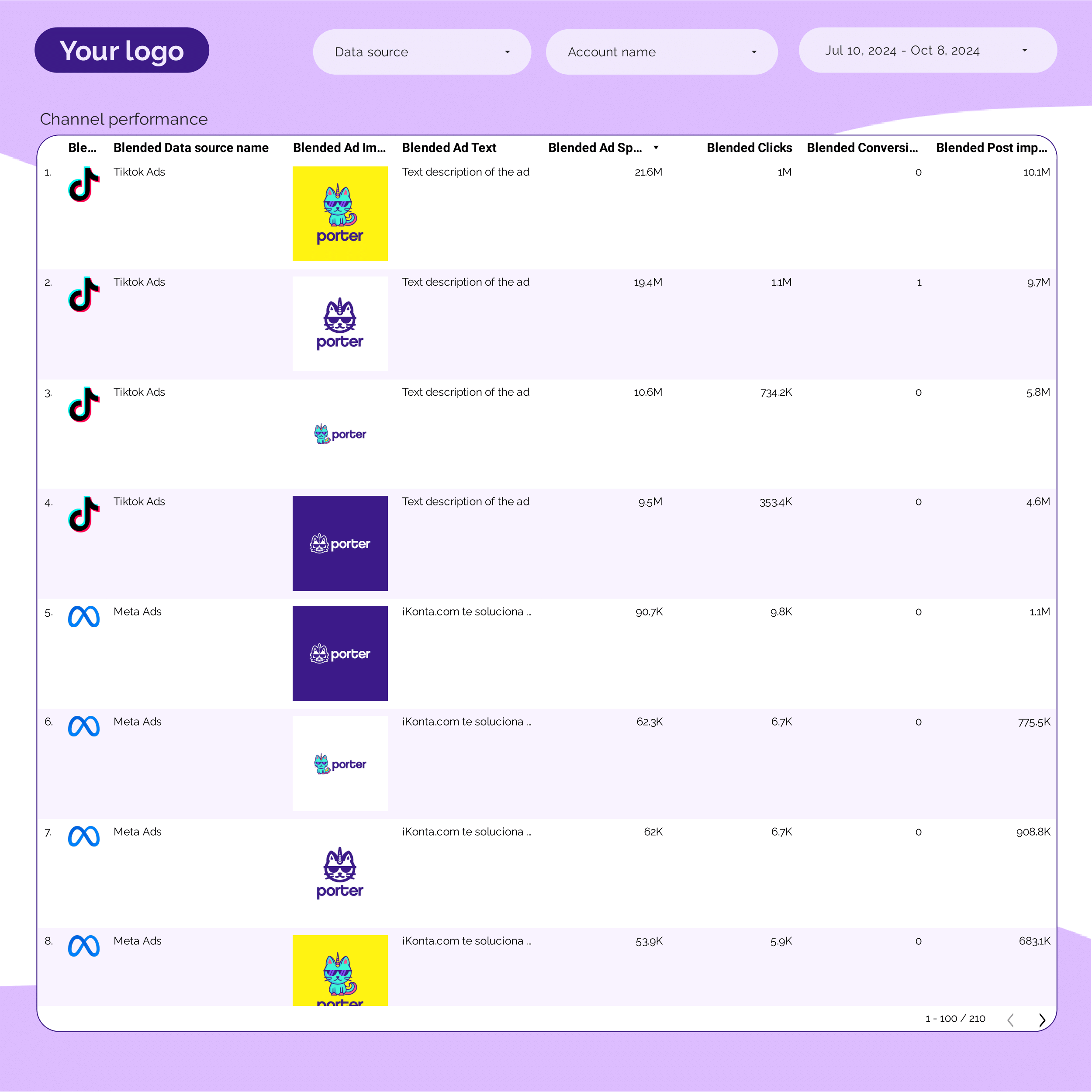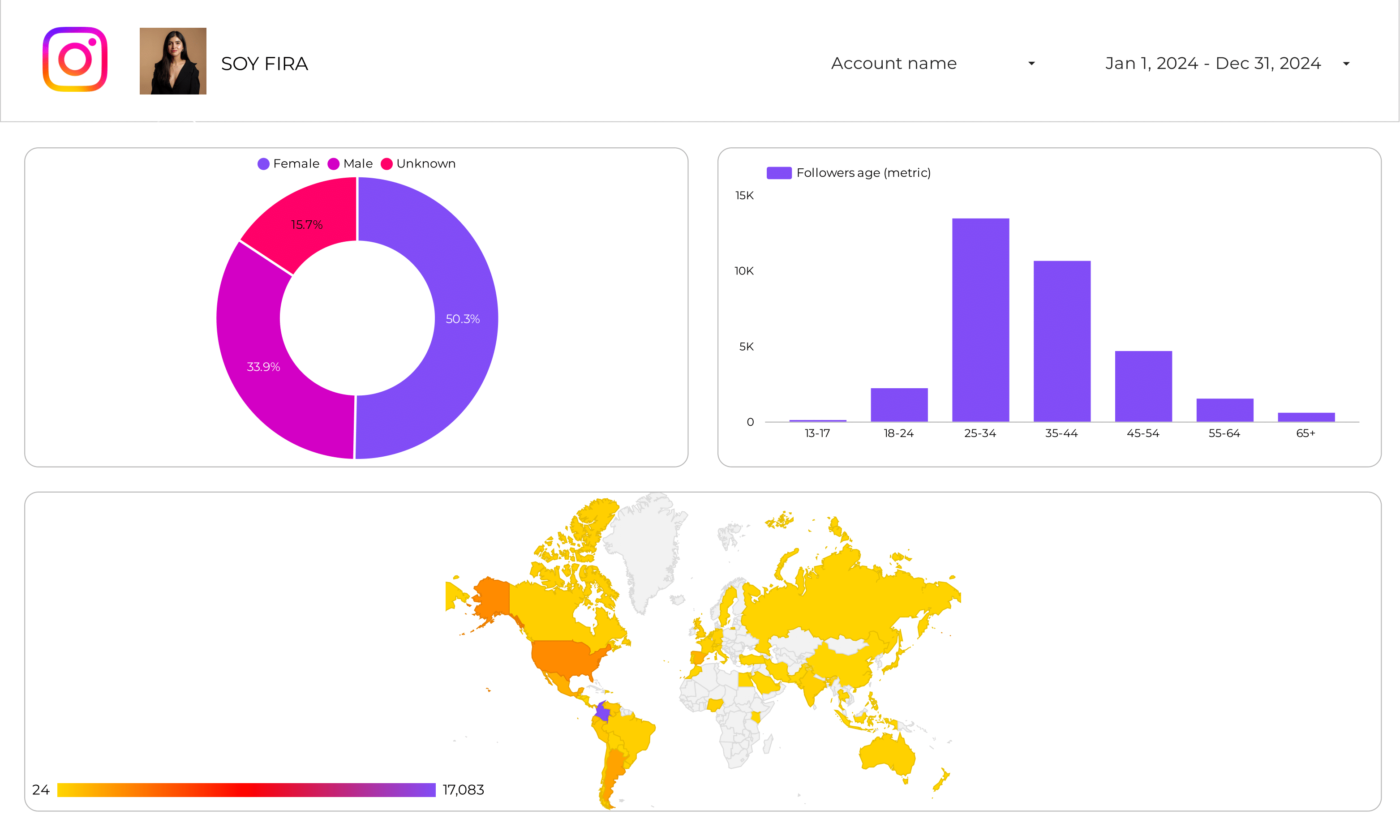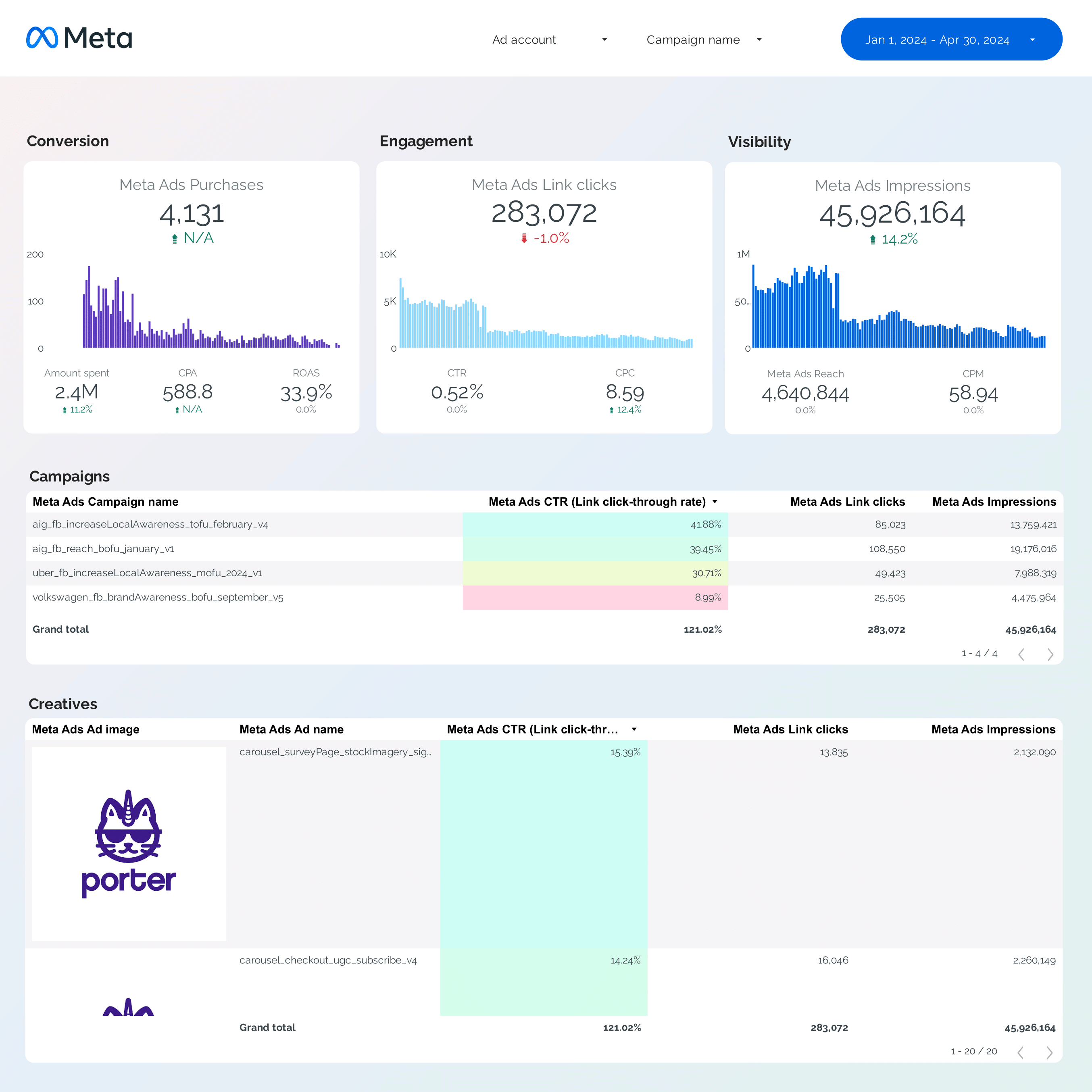
Facebook Ads Report template for Marketing teams and agencies
Optimize your Facebook Ads strategy with this report template. Track metrics like cost per conversion, ROAS, and CTR. Analyze performance by audience, placement, and time. Ideal for PPC and Paid Media teams to measure ad effectiveness across demographics and interests.
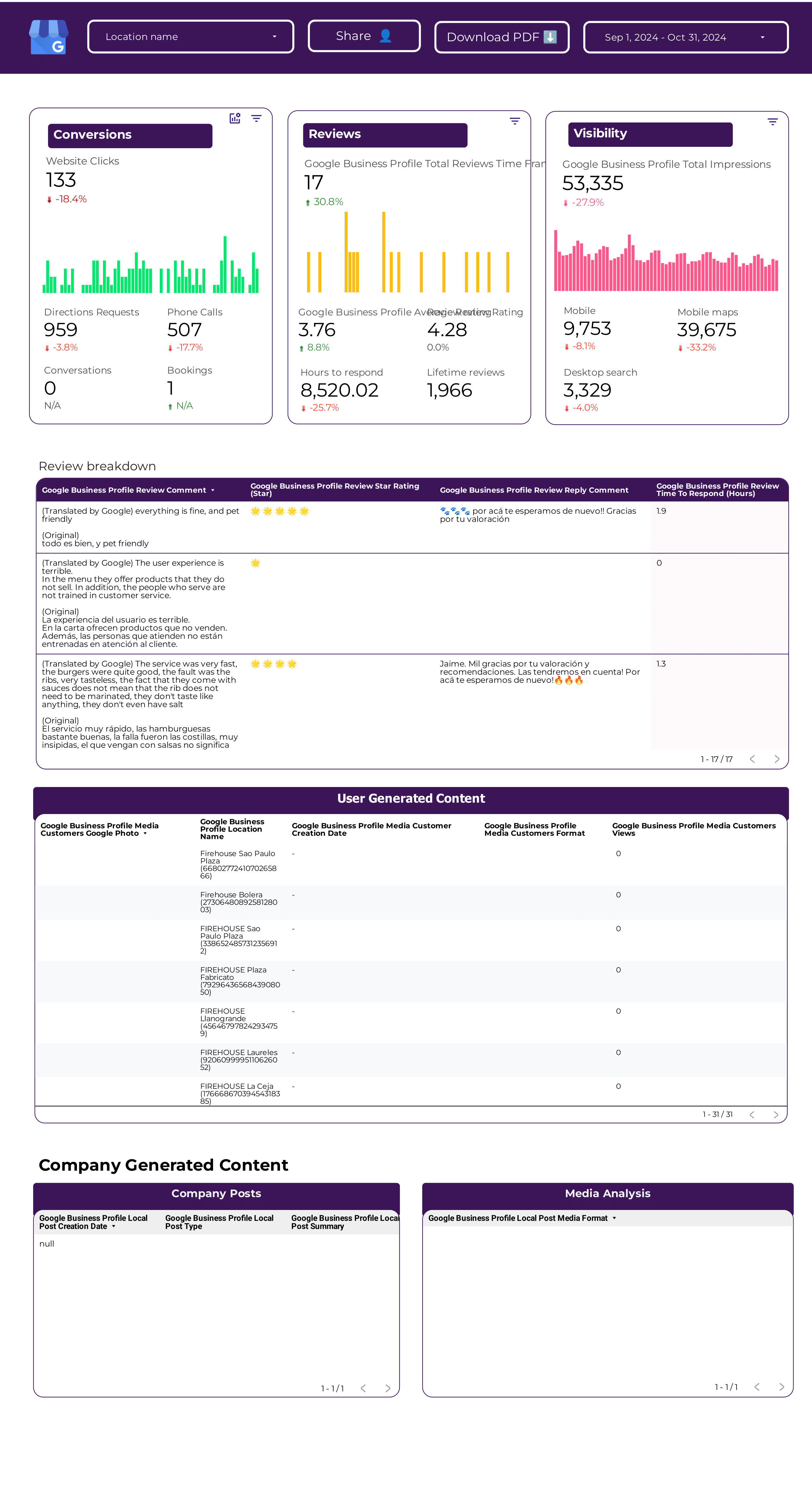
Google Business Profile Report template for Marketing teams and agencies
Optimize your local SEO strategy with this Google Business Profile report template. Track CTR, conversion rate, CAC, clicks, impressions, and reviews. Analyze data by location, age, gender, and time. Perfect for marketing teams aiming to consolidate performance insights and meet specific goals.
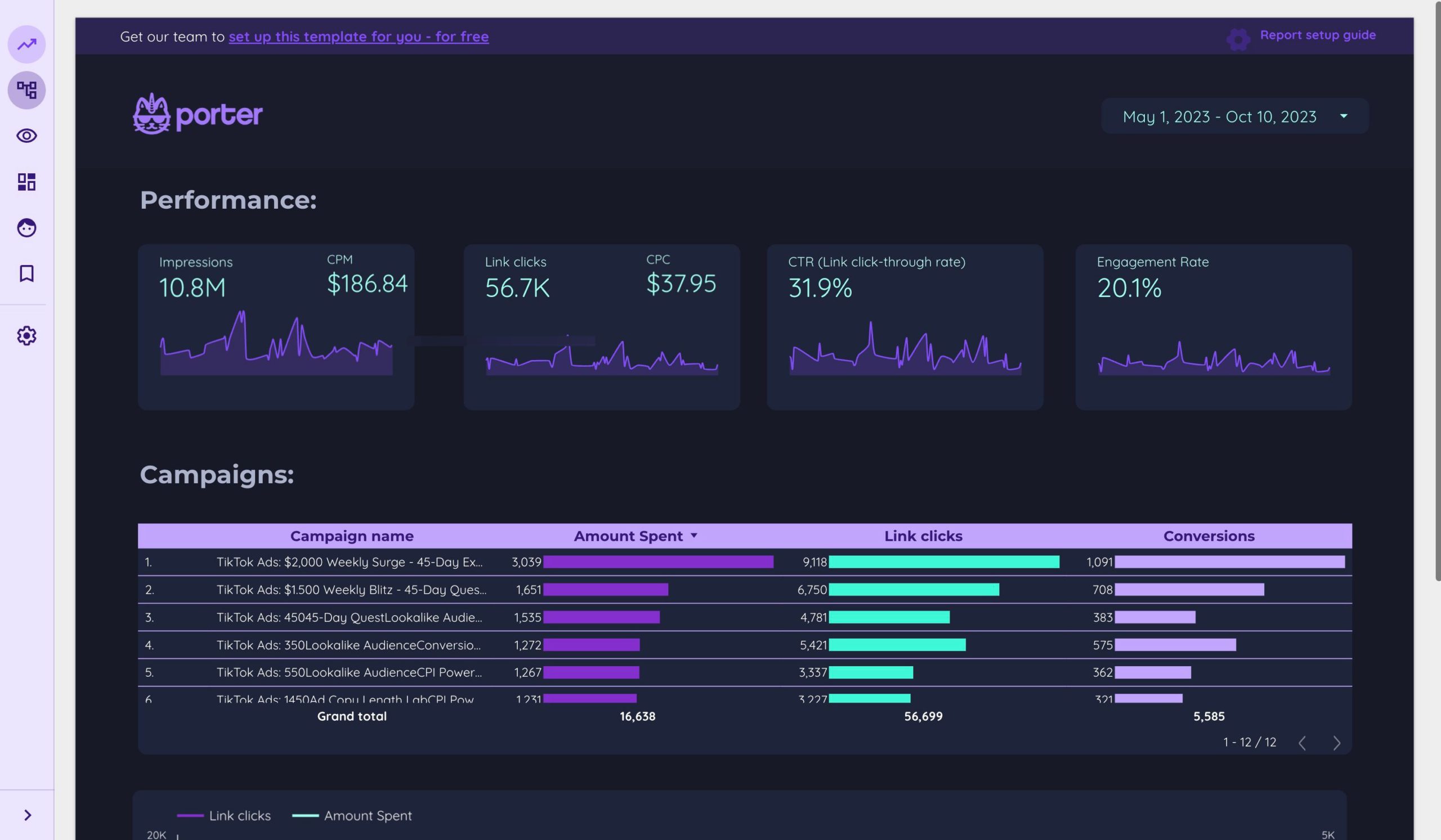
TikTok Ads Report template for Marketing teams and agencies
Optimize TikTok Ads performance with this report template. Track CTR, conversion rate, and cost per conversion. Analyze impressions, reach, and engagement. Segment by audience, ad placement, and time. Perfect for PPC specialists aiming to achieve marketing goals and enhance strategy.
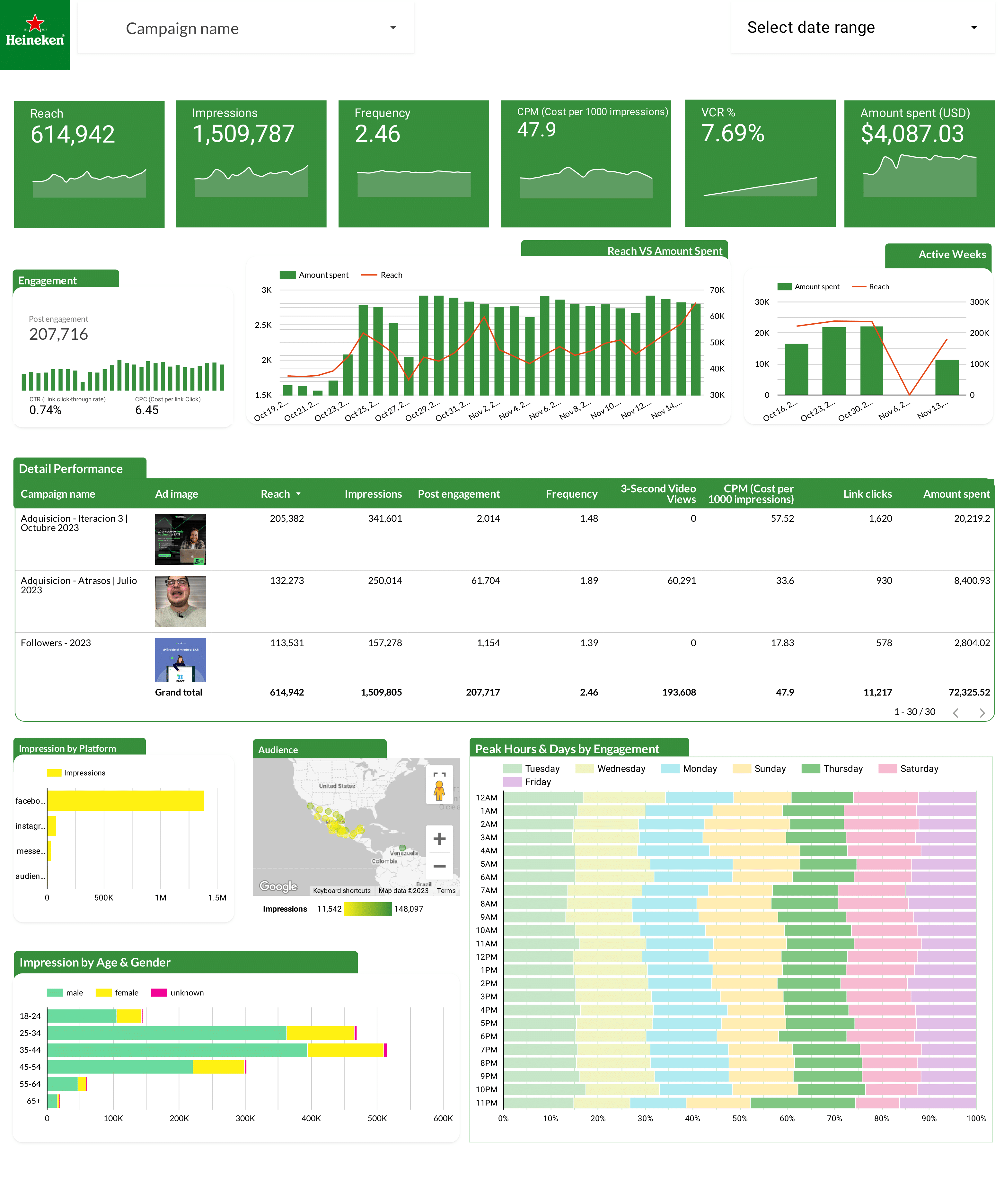
Facebook Ads Report template for Marketing teams and agencies
Optimize your Facebook Ads strategy with this report template. Measure key metrics like cost per conversion, ROAS, and CTR. Analyze performance by audience, placement, and time. Ideal for PPC specialists to track and improve paid media campaigns. Consolidate data from Facebook Ads and PPC for actionable insights.
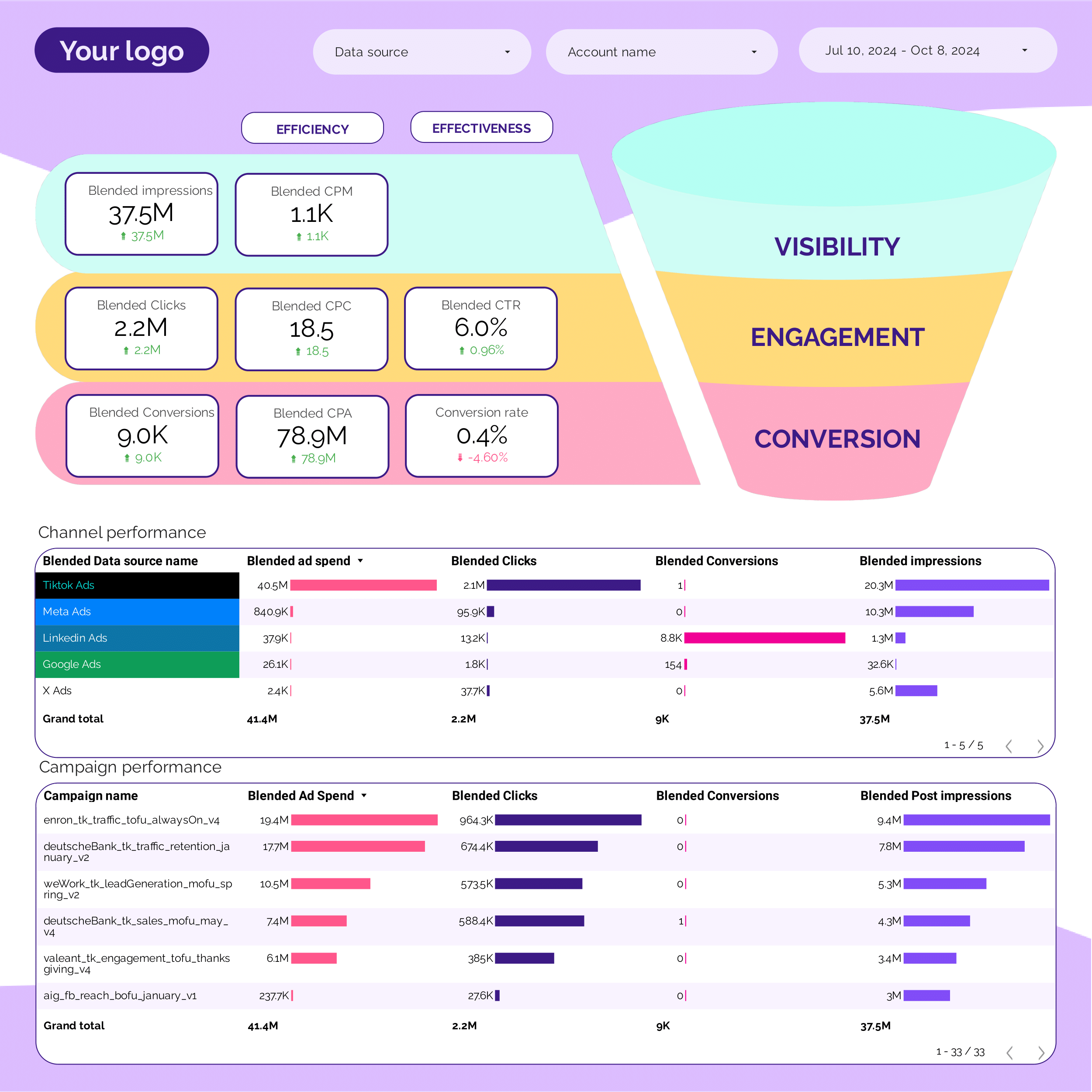
PPC Funnel Report template for Marketing teams and agencies
Get the actual PPC Funnel on Looker Studio template used by Porter to monitor PPC performance.
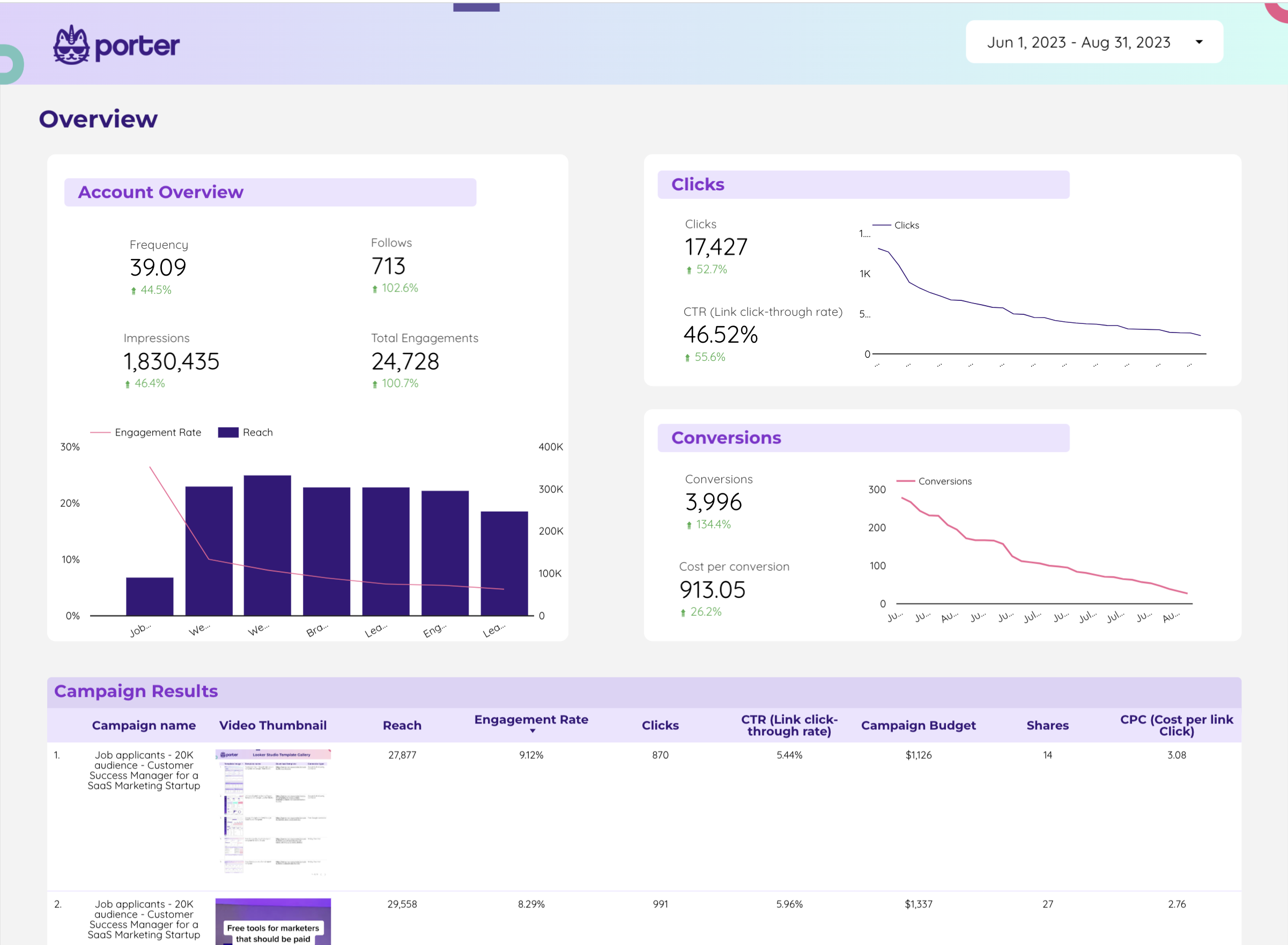
Twitter Ads Report template for Marketing teams and agencies
Analyze key metrics like CTR, conversion rate, and social actions with this Twitter Ads report template. Track performance by campaign objective, ad format, and audience targeting. Segment data by time, location, gender, and age. Perfect for PPC specialists to consolidate Twitter Ads and Paid Media strategies for actionable insights.
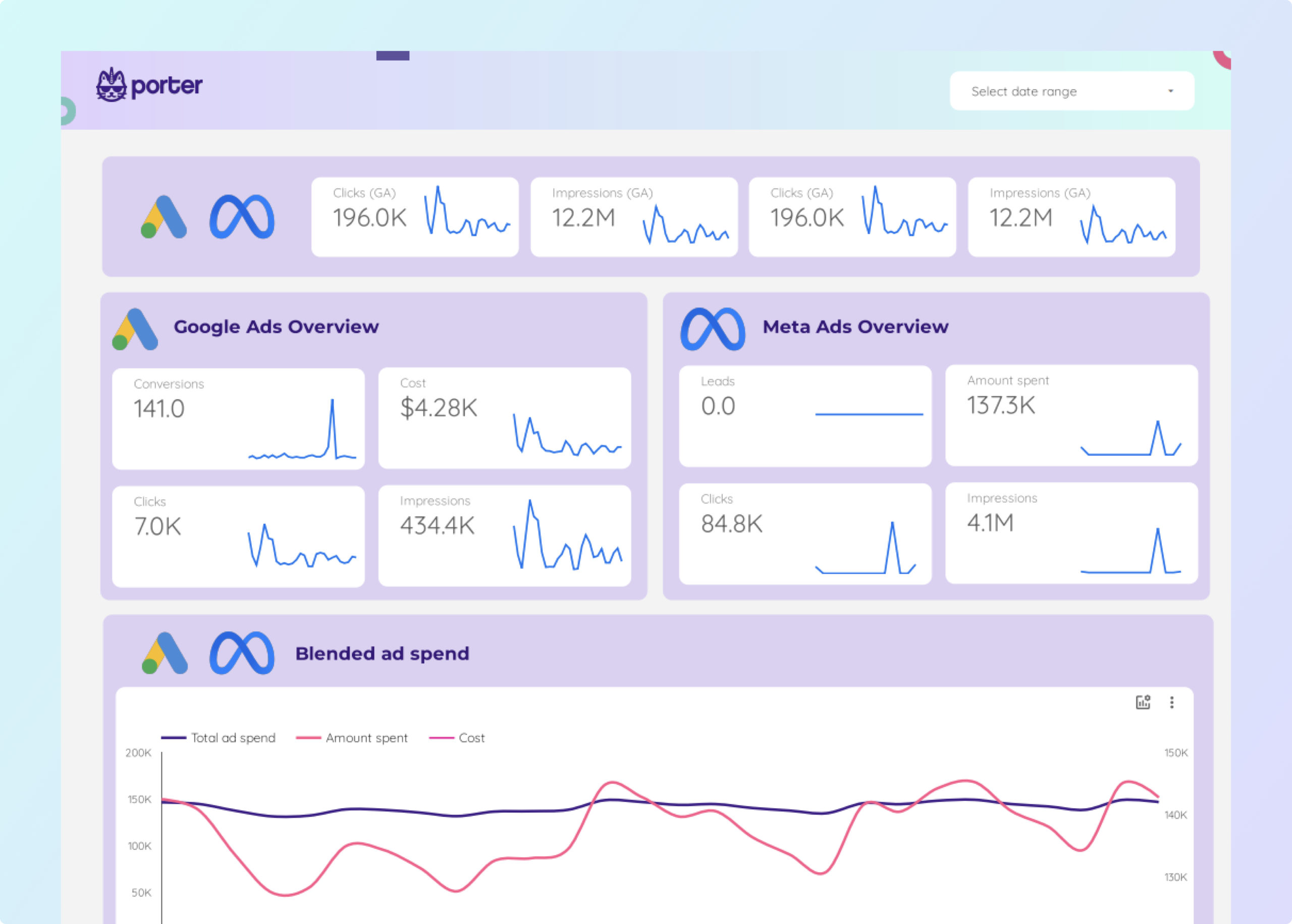
Facebook Ads + Google Ads Report template for Marketing teams and agencies
Track and analyze key metrics with the Facebook Ads + Google Ads report template. Measure conversion rates, ROI, and CTR. Segment by audience, objectives, and time. Ideal for marketing teams to consolidate insights and optimize paid media strategies. Understand demographics and consumer behavior for actionable performance insights.
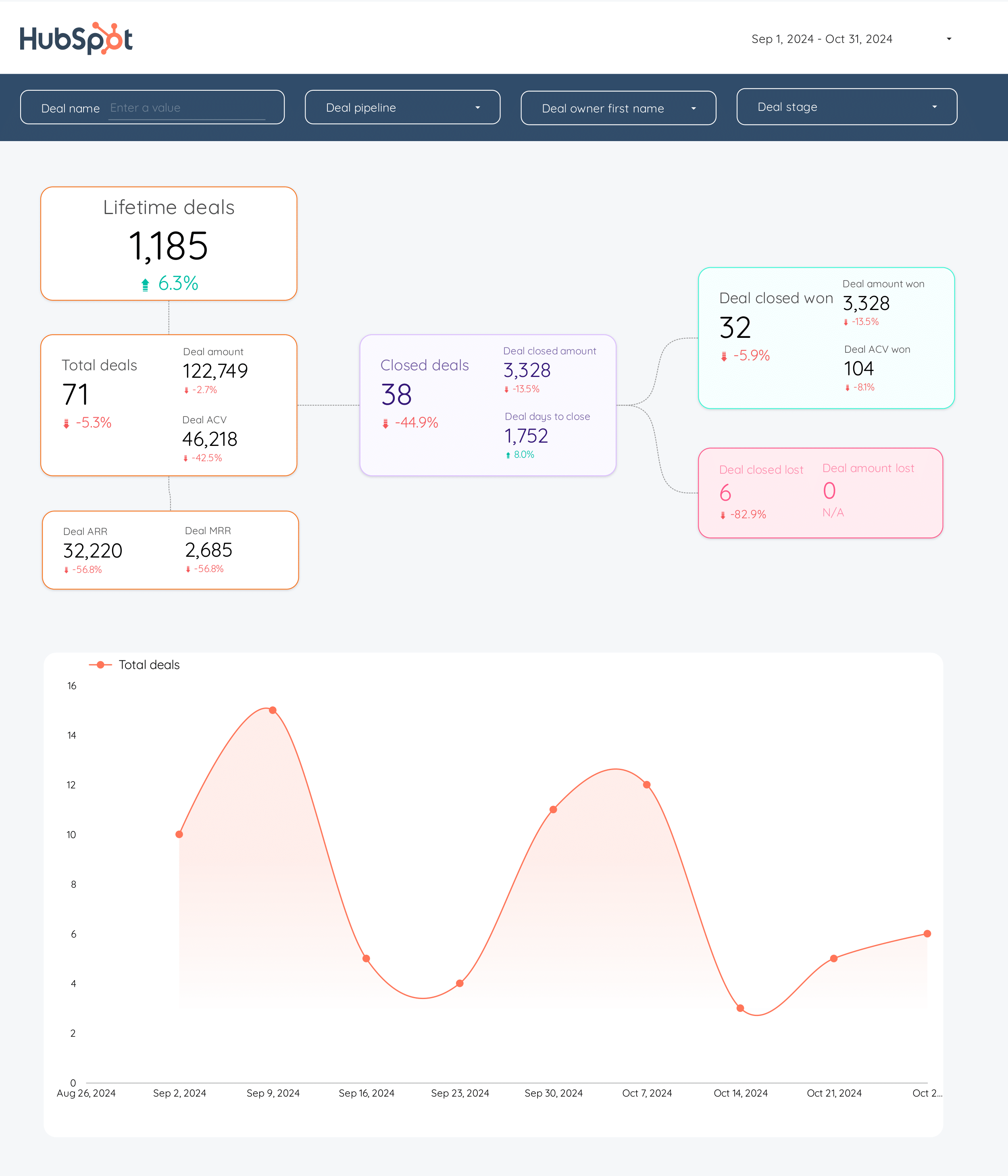
HubSpot Report template for Marketing teams and agencies
Optimize B2B marketing with this HubSpot report template. Track metrics like conversion rate, ROI, and average deal size. Analyze CRM contacts and campaign performance by demographic and psychographic breakdowns. Ideal for inbound marketing teams to measure and refine email marketing and funnel strategies across different timeframes.
PPC KPIs Report template for Marketing teams and agencies
Get the actual PPC KPIs on Looker Studio template used by Porter to monitor PPC performance.
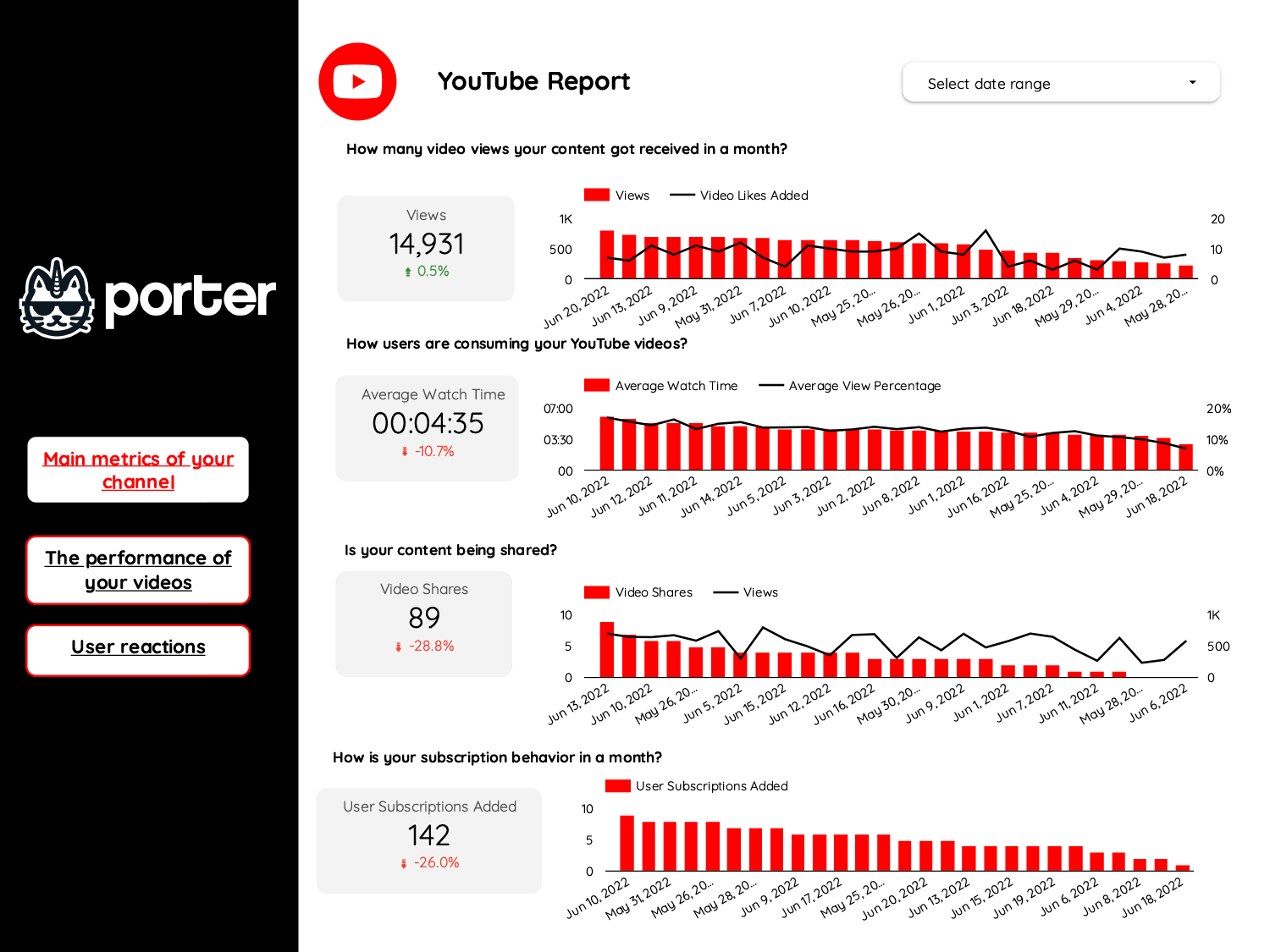
Youtube Report template for Marketing teams and agencies
Optimize your social media strategy with this Youtube report template. Track CTR, conversion rate, CPA, likes, comments, shares, views, watch time, and subscribers. Analyze by audience, age, gender, interests, and time. Perfect for marketing teams seeking actionable insights to enhance performance across advertising platforms and align with SEO objectives.
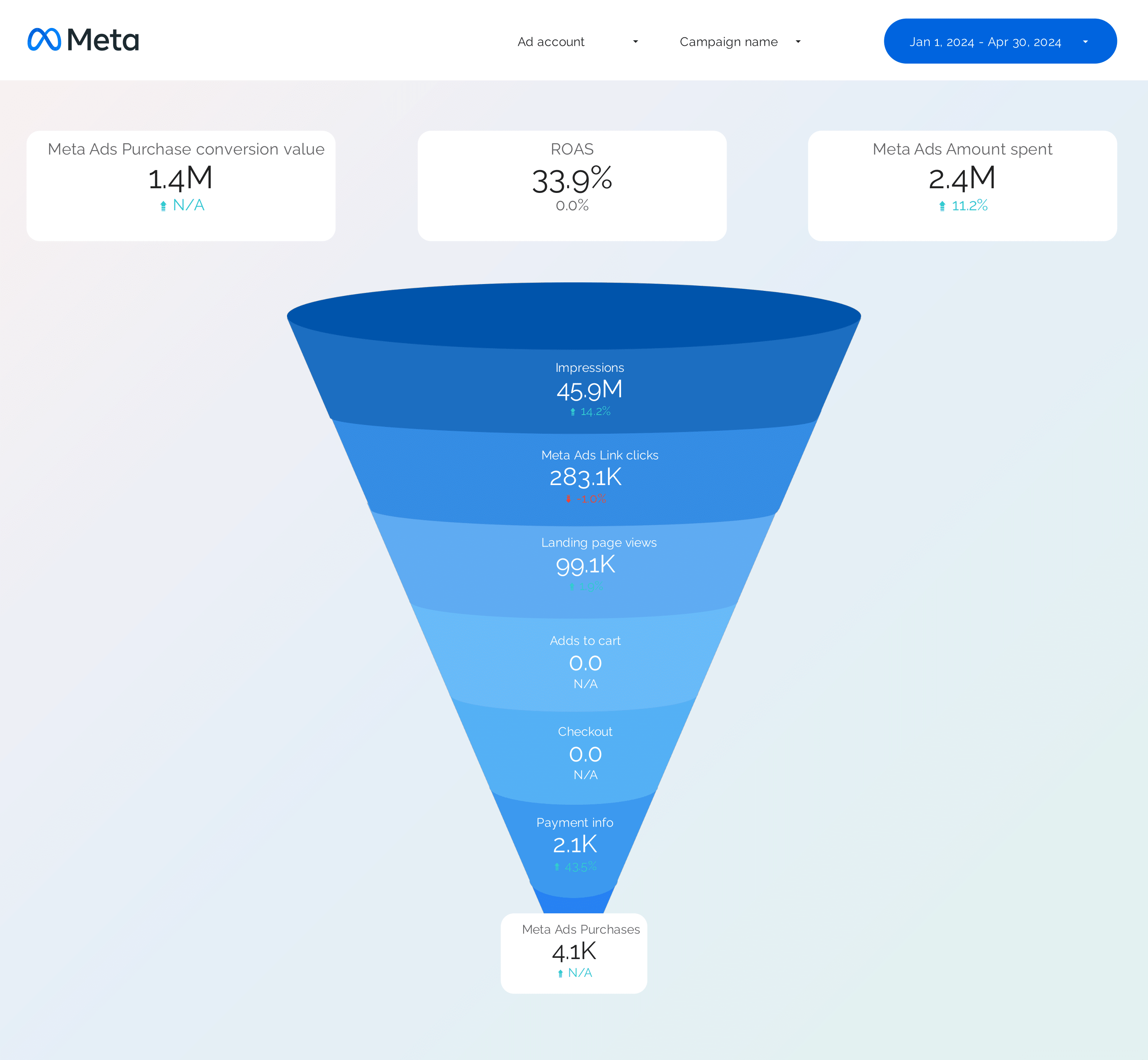
Facebook Ads Funnel Report template for Marketing teams and agencies
Optimize your Facebook Ads Funnel with this report template. Track CTR, conversion rate, CPA, and more. Analyze audience targeting, ad creative, and placement strategy. Segment by demographics and behavior. Ideal for PPC and paid media specialists to enhance campaign performance and achieve marketing objectives. Perfect for understanding reach, impressions, and organic search traffic.
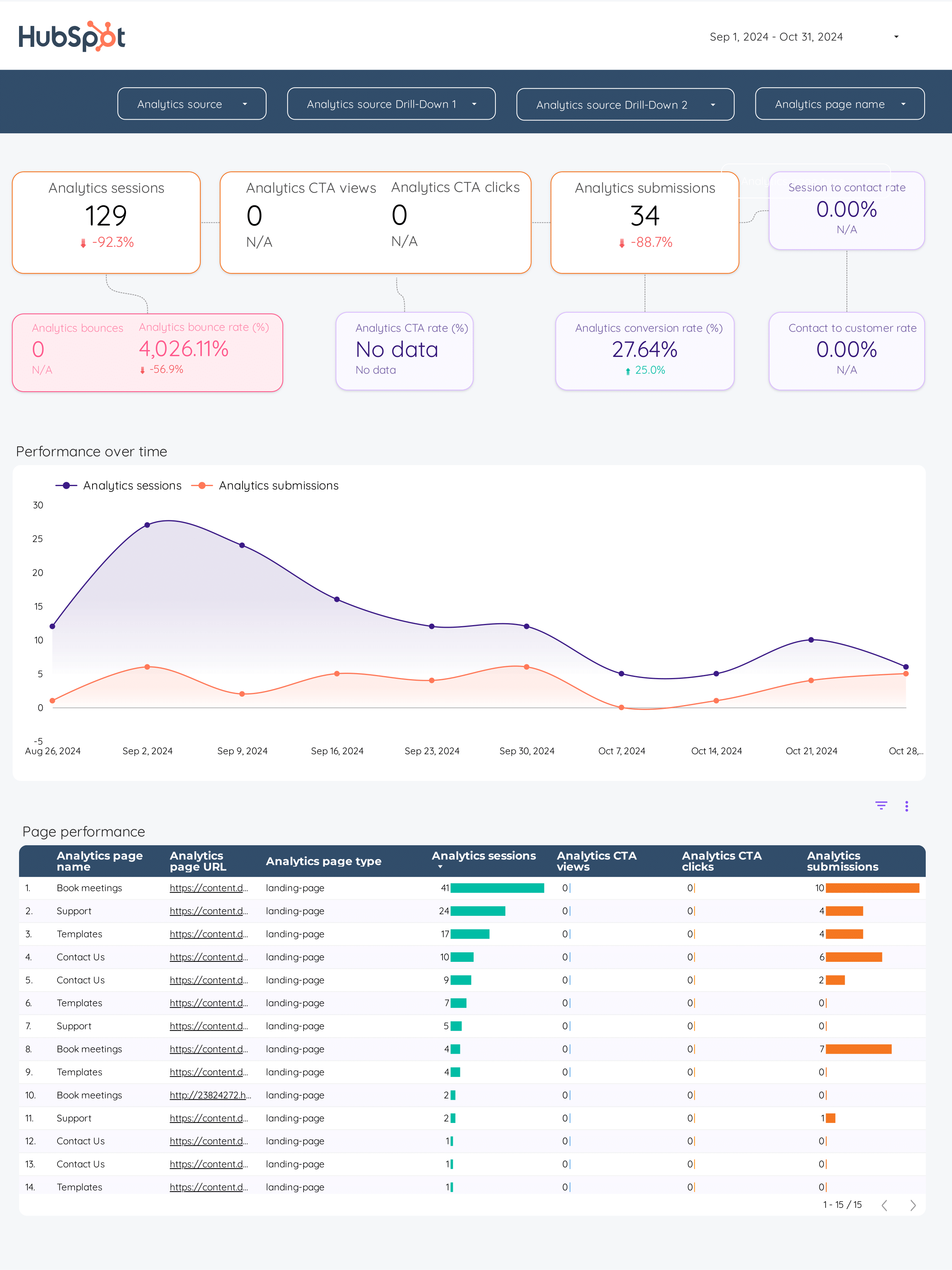
Inbound marketing Report template for Marketing teams and agencies
Optimize your strategy with this Inbound marketing report template. Track KPIs like conversion rates and social media engagement. Analyze data from CRM, E-commerce, Facebook Ads, Google Analytics 4, and LinkedIn Ads. Segment by demographics and timeframes. Ideal for B2B and e-commerce teams to measure performance and achieve marketing goals.
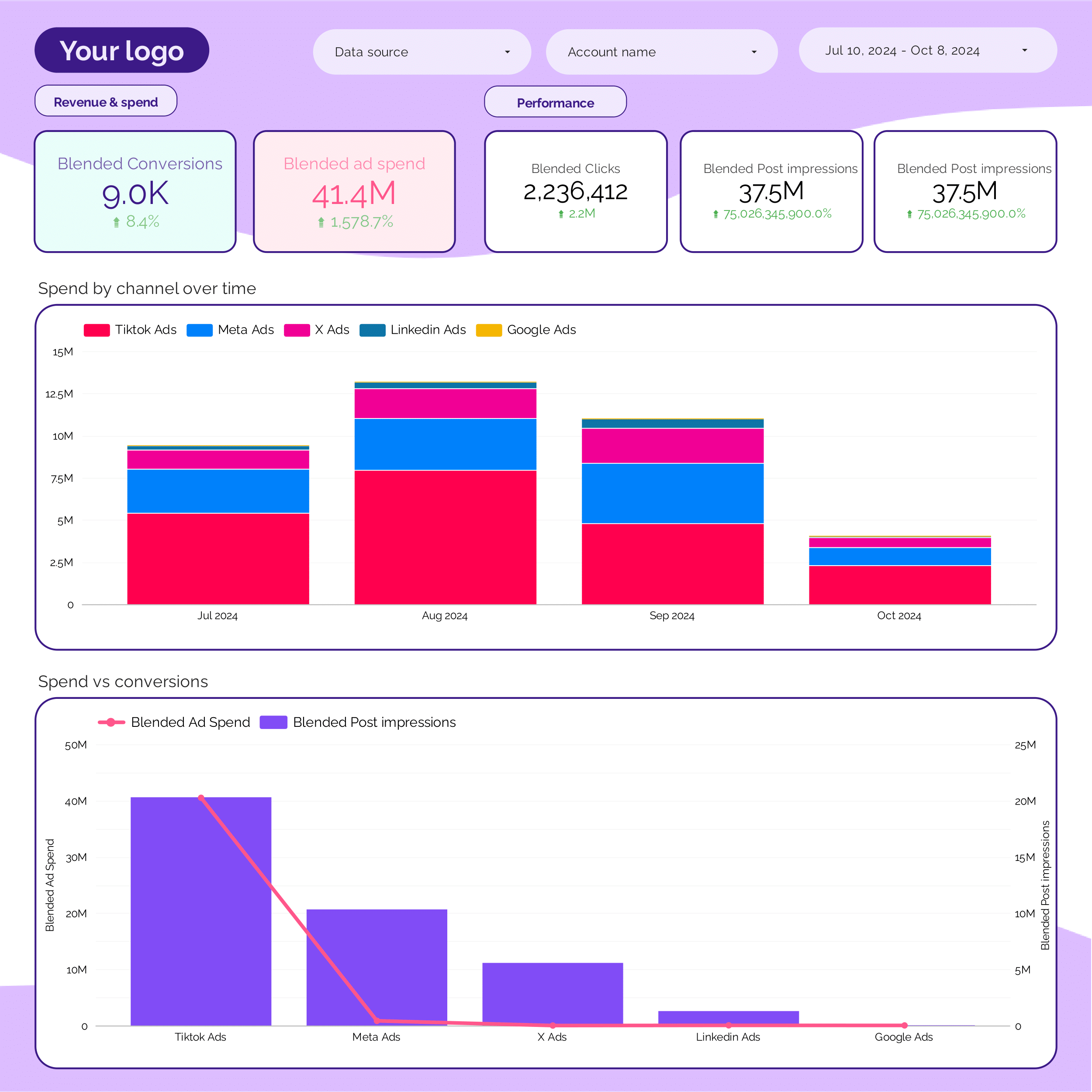
PPC monthly Report template for Marketing teams and agencies
Get the actual PPC monthly on Looker Studio template used by Porter to monitor PPC performance.
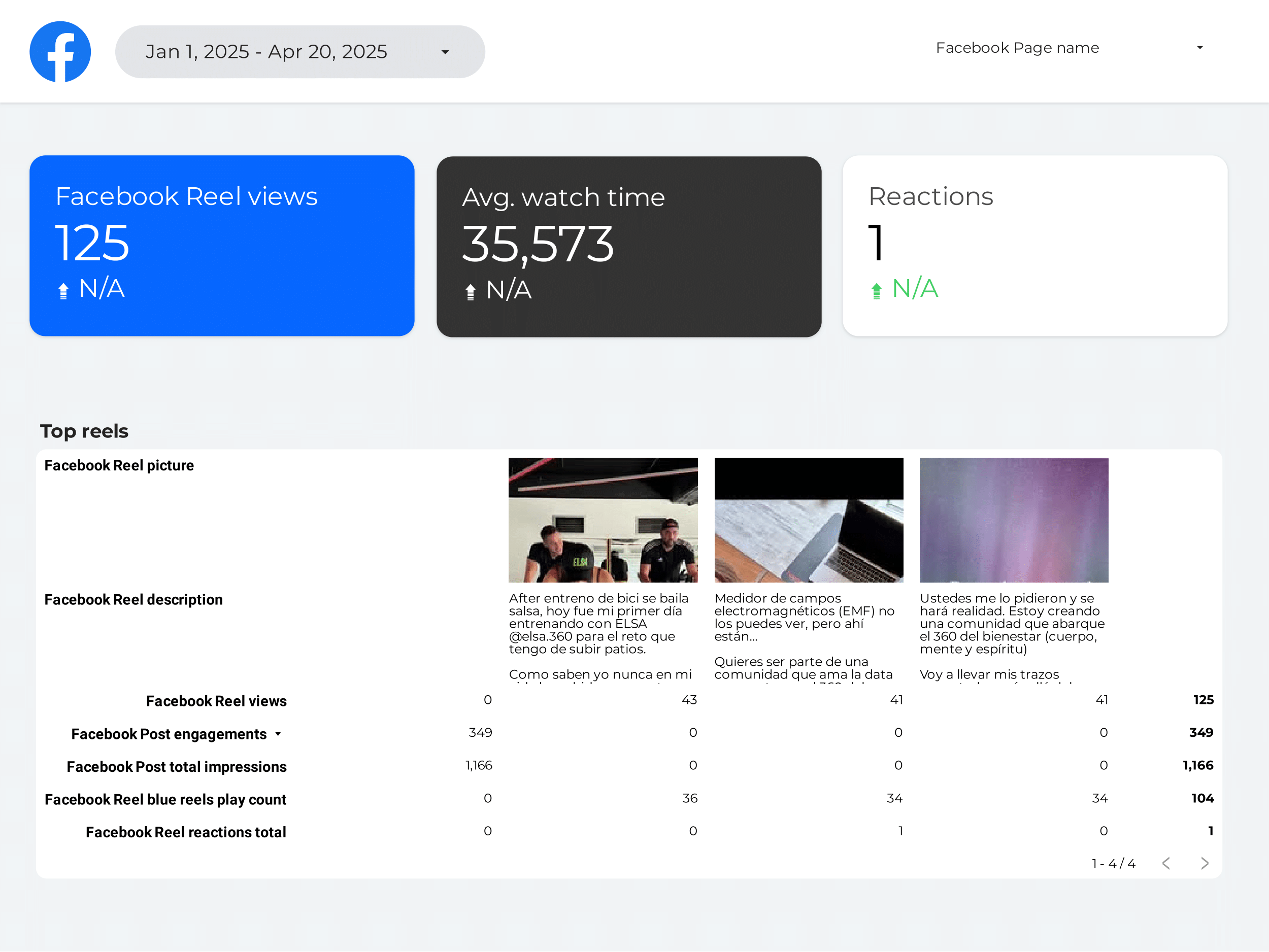
Facebook Insights Report template for Marketing teams and agencies
Optimize your social media strategy with this Facebook Insights report template. Track CTR, conversion rate, and engagement. Analyze metrics by age, gender, and location. View insights by hour, day, or month. Perfect for marketing teams to measure performance and achieve objectives.
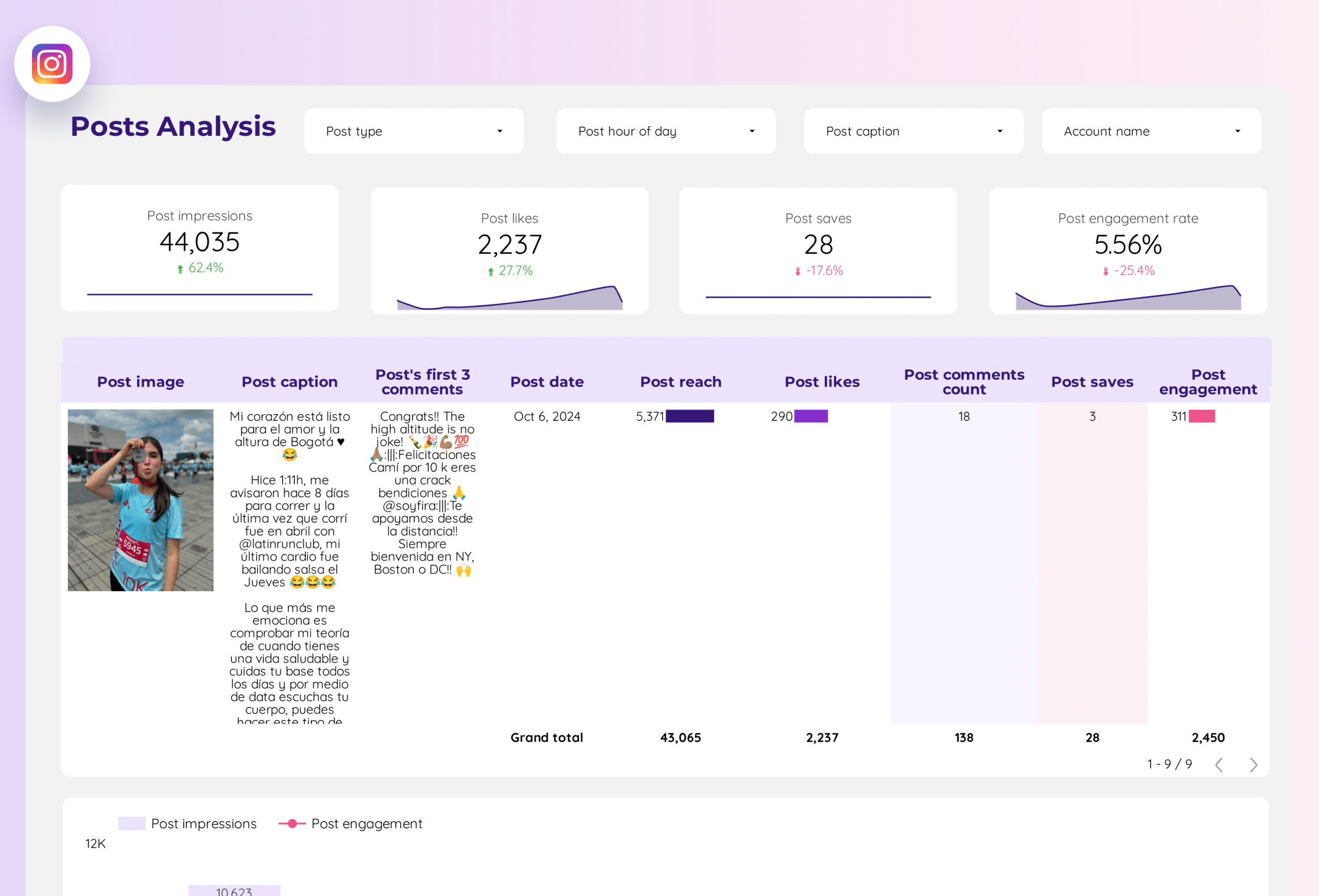
Instagram Insights Report template for Marketing teams and agencies
Analyze key metrics with the Instagram Insights report template. Measure CTR, conversion rate, ROI, likes, comments, shares, impressions, and reach. Segment by age, gender, location, and time. Ideal for social media marketers to consolidate performance data and refine strategies. Gain actionable insights to optimize engagement and ROI.
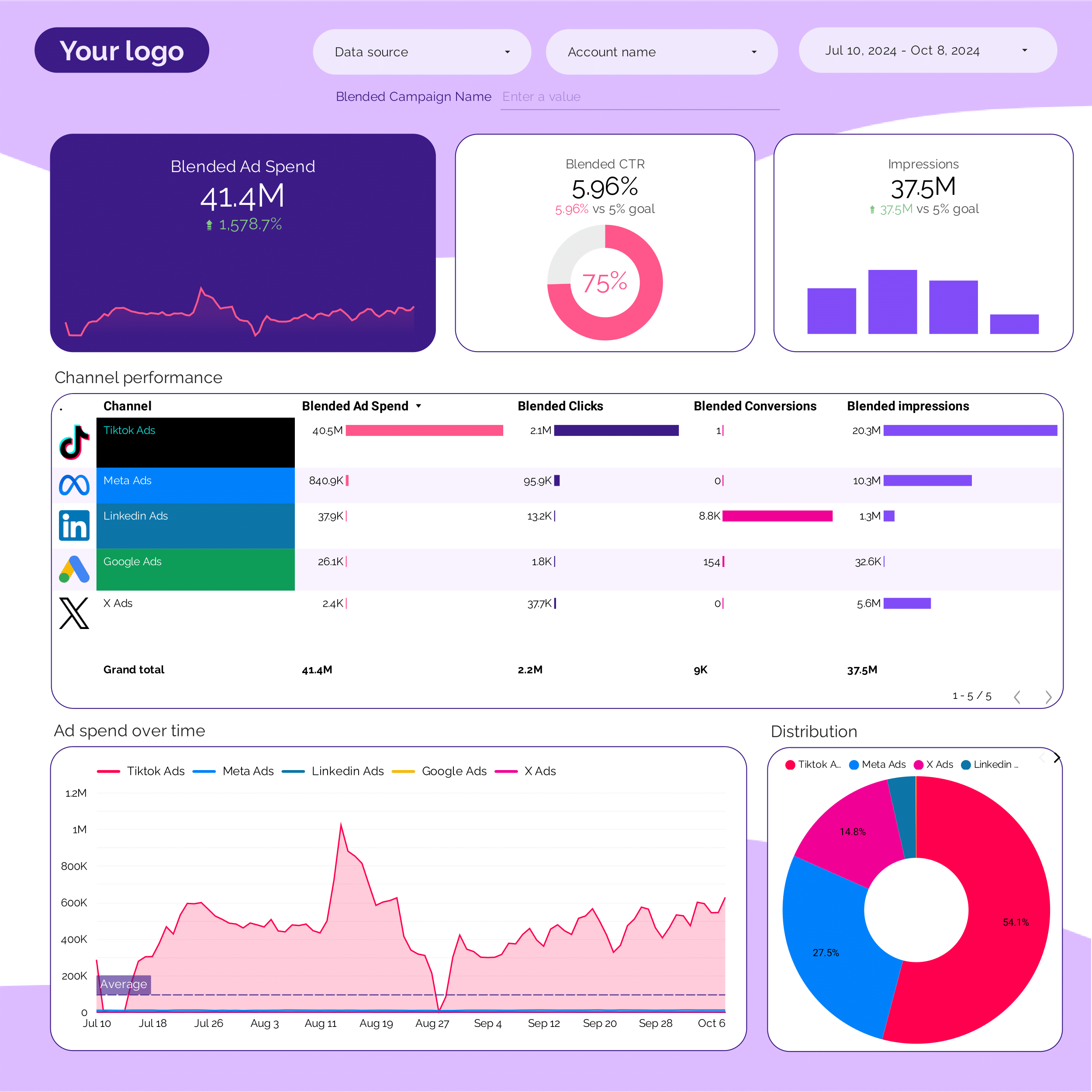
PPC multi-channel Report template for Marketing teams and agencies
Get the actual PPC multi-channel on Looker Studio template used by Porter to monitor PPC performance.
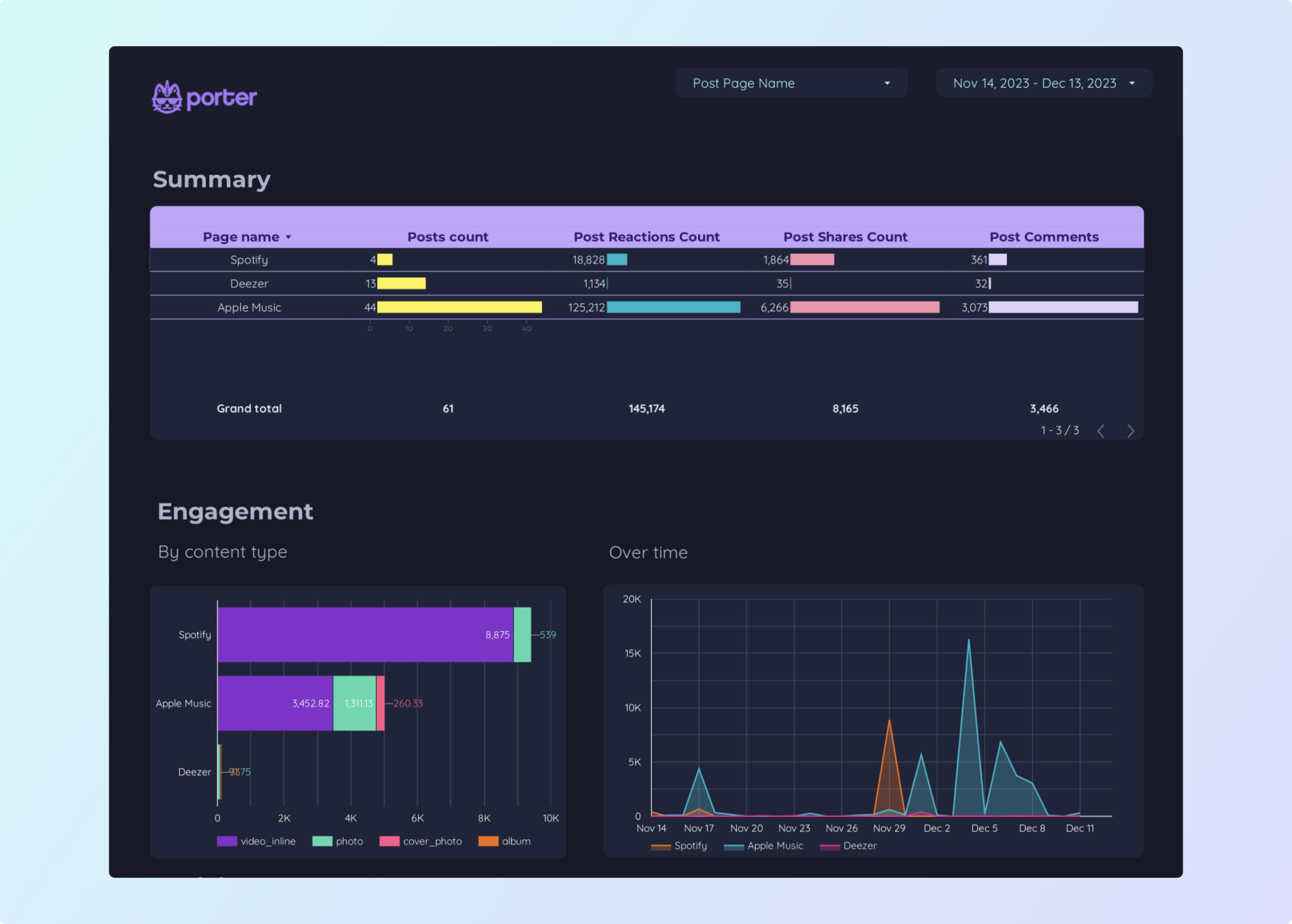
Facebook Insights competitors Report template for Marketing teams and agencies
Track key metrics like CTR, conversion rate, and share of voice with the Facebook Insights competitors report template. Analyze performance across demographics, channels, and timeframes. Leverage social media and Facebook public data to refine your strategy. Perfect for marketing teams aiming to consolidate insights and achieve specific goals.
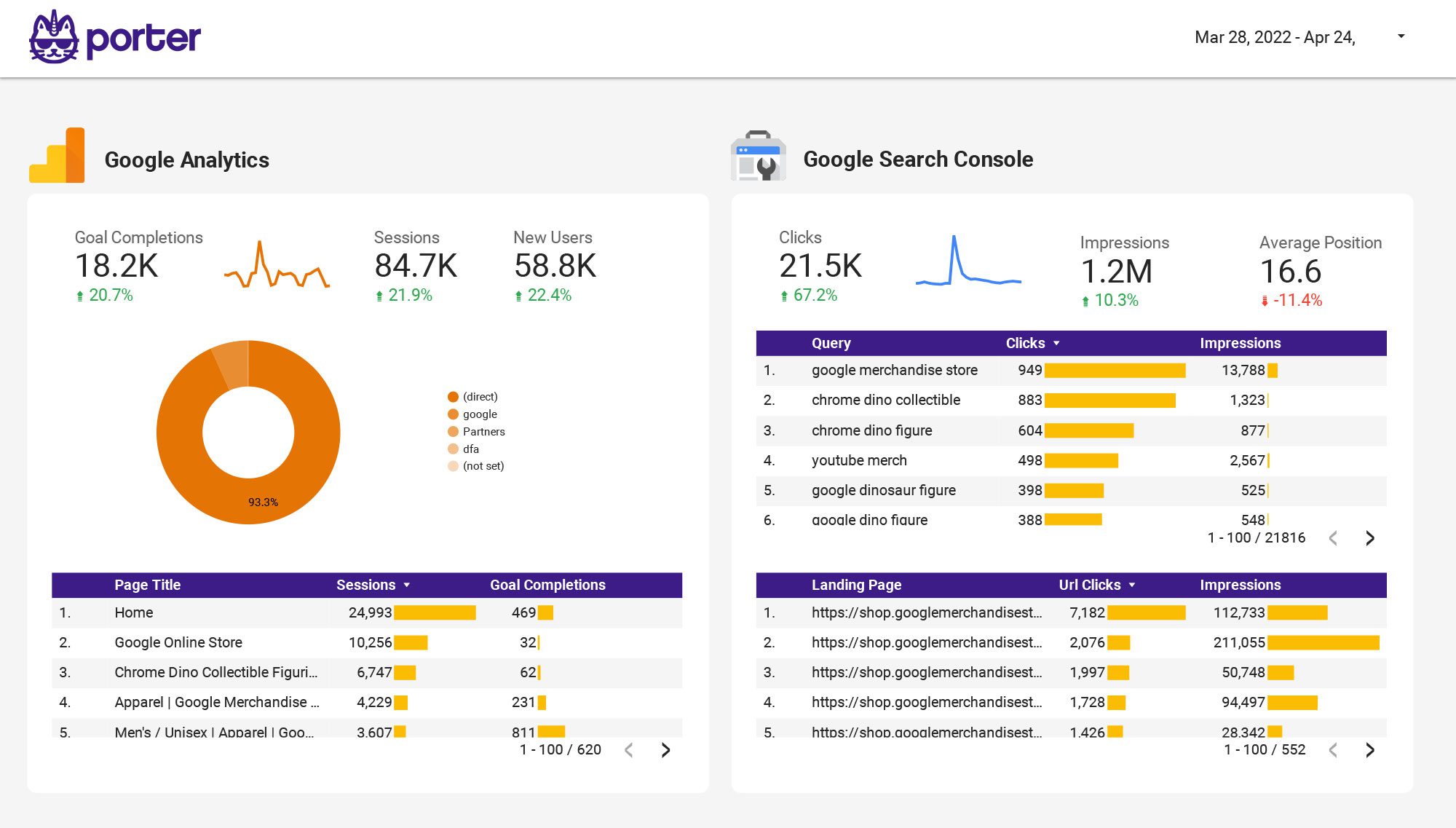
Multi-channel Marketing performance Report template for Marketing teams and agencies
Optimize your strategy with the Multi-channel Marketing performance report template. Track CTR, ROI, and engagement metrics from SEO, Google Analytics 4, Facebook Ads, Instagram Insights, and more. Analyze channel performance and customer engagement by demographics and timeframes. Perfect for marketing teams to measure and improve performance across diverse platforms.

